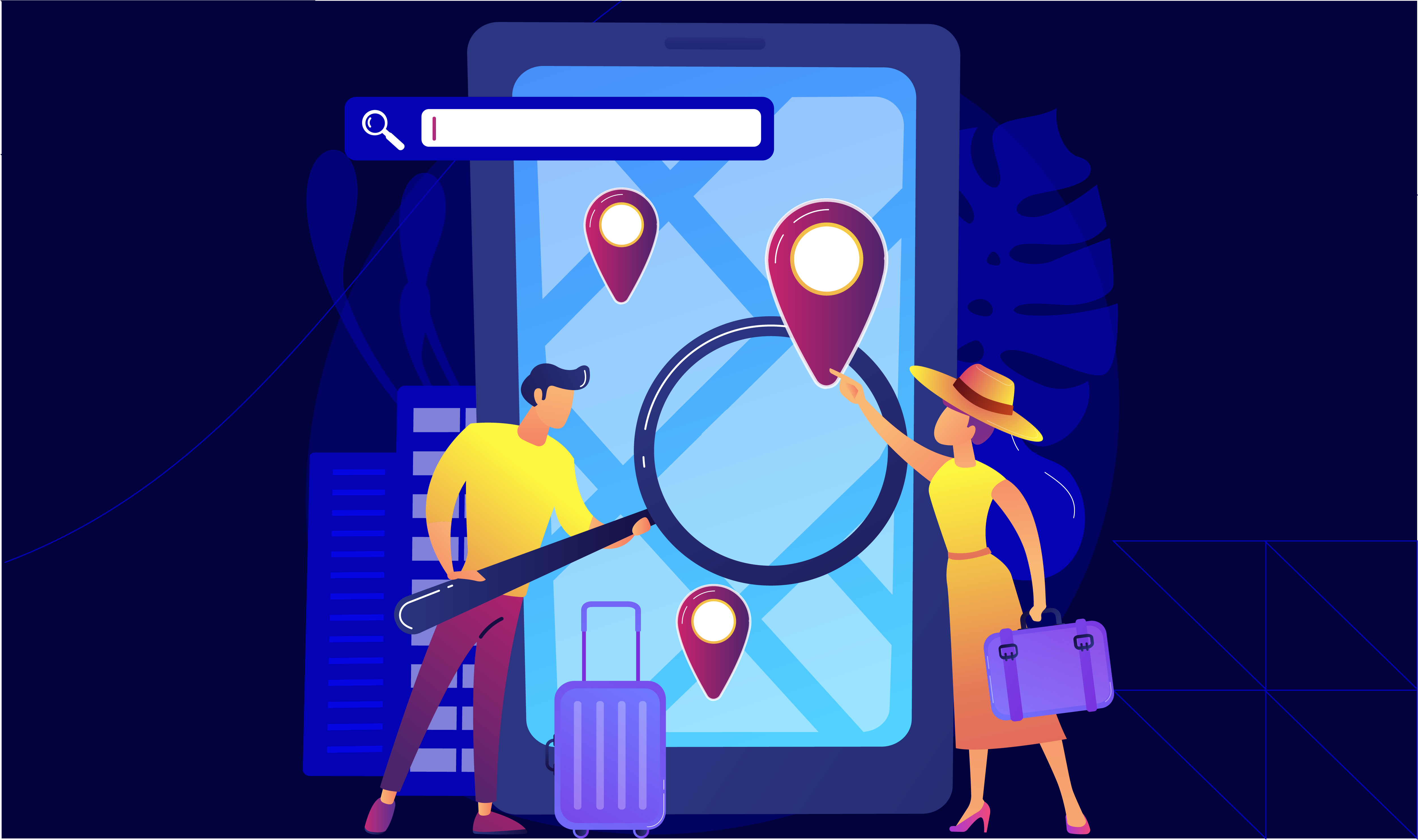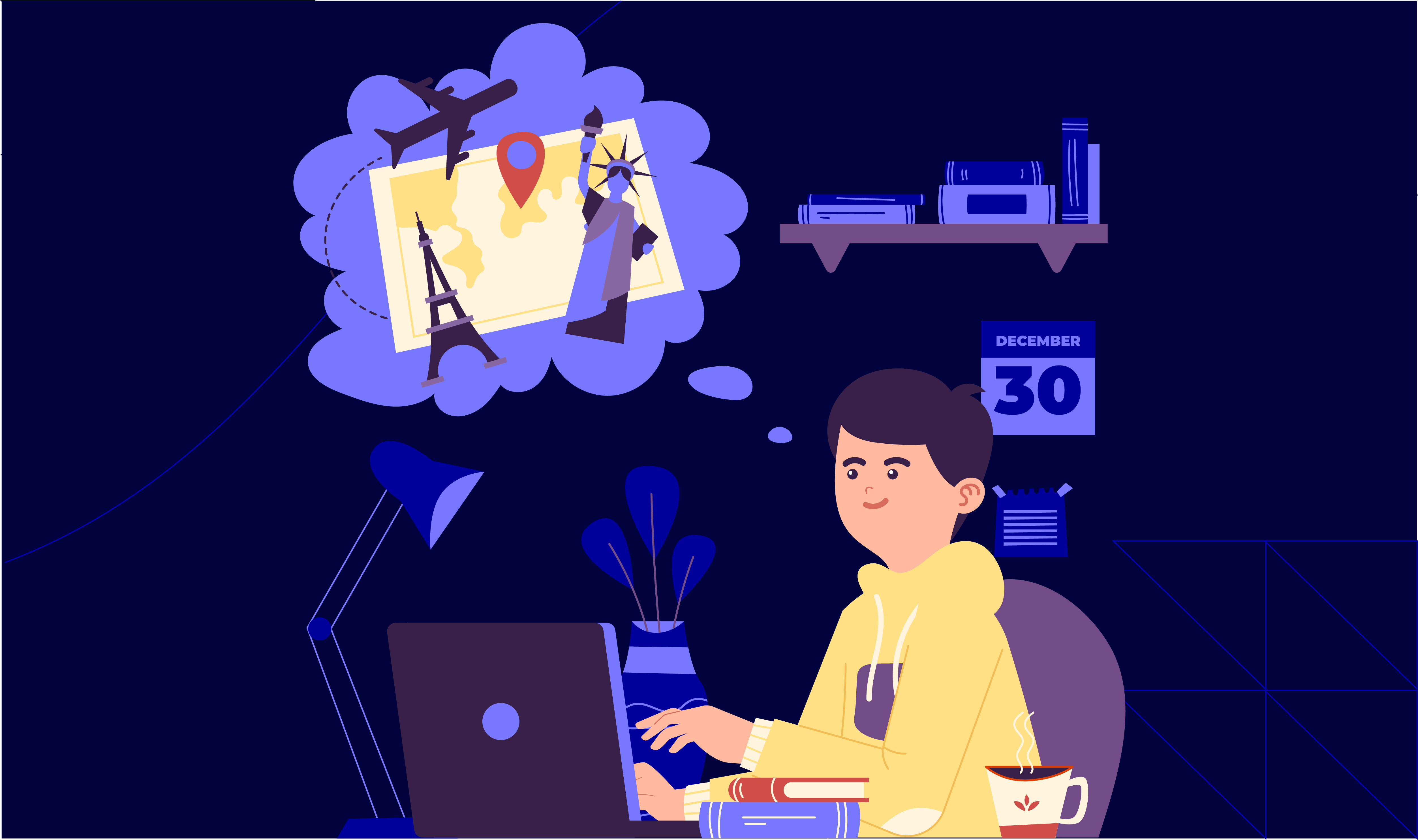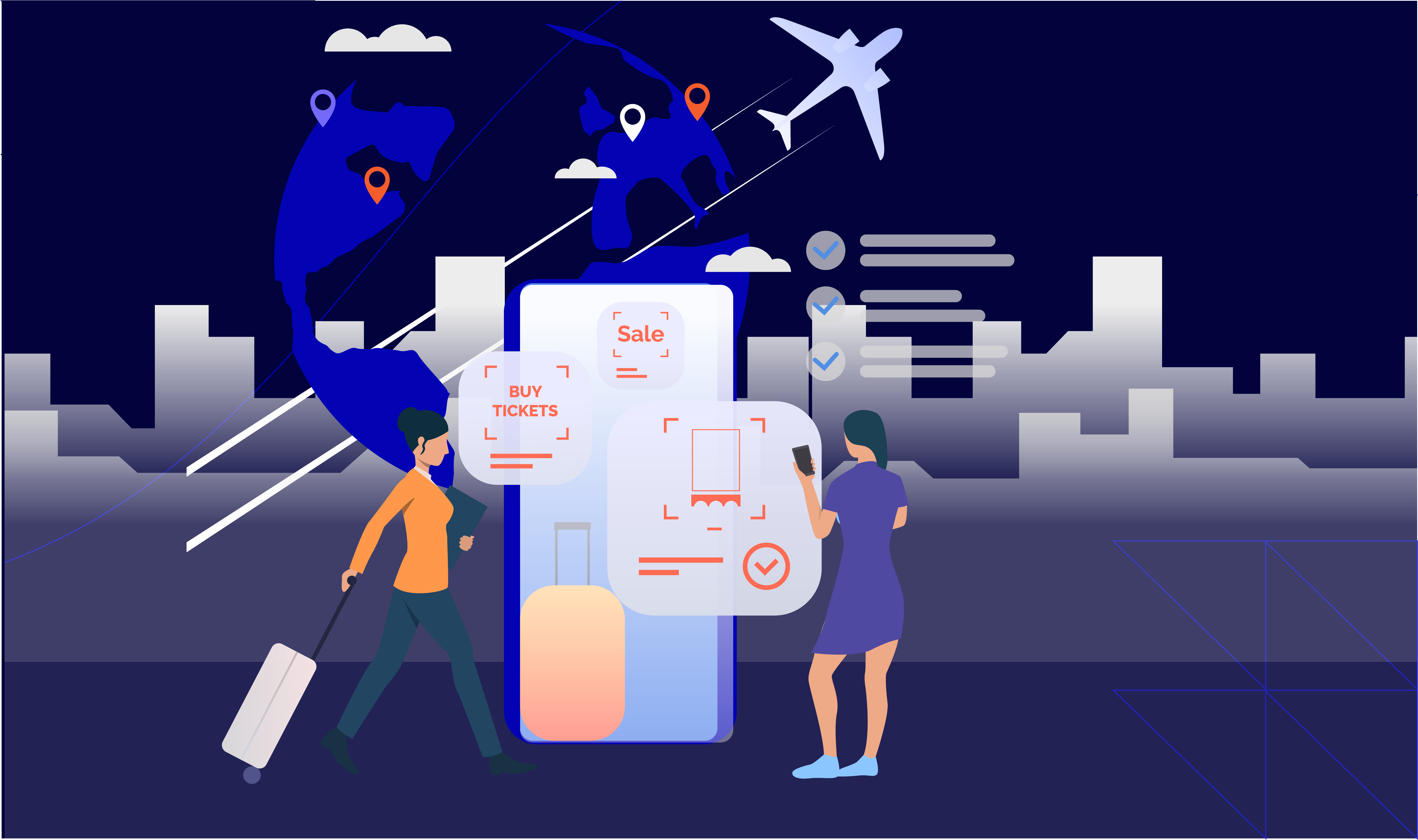Travel customer experience is the complete journey a traveller goes through when interacting with a travel brand online (from booking to feedback). As a travel agency, you can improve it by offering personalized experiences, adopting a customer-first mindset and leveraging technologies like AI, ML and data analytics to anticipate customer needs.
Today’s travellers are more online than ever before! Studies show that (in 2023) about 65% of all travel bookings were made online! Also, about 35% of those bookings were made via mobile devices. It is expected that by 2029, 75% of revenue from this sector will come from online sales.
But, with countless touchpoints (from social media to booking platforms), don’t you think the online travel customer experience has become a complex maze?
Even if it’s a yes, you have to clear this maze with precision! Businesses that fail to deal with it risk losing customers to competitors.
The good news? As a travel company, you can use digital tools, omnichannel communication and data-driven insights to turn every interaction into an opportunity. Also, through social media influence, proactive customer service, 24/7 support and adopting a 100% customer-first mindset, you can significantly increase your sales.
So, want to become a travel brand that exceeds customer expectations? In this article, let’s first learn what travel and hospitality call center outsourcing is, how it is delivered, and the factors that influence it. Next, we will study five proven techniques to boost your online travel CX in 2025.
What is Travel Customer Experience?

Travel customer experience refers to the complete process a traveller goes through when interacting with your travel company online. It covers all the major steps, such as:
- Researching a destination
- Booking a trip
- Sharing feedback after the journey
Let’s understand in detail how a travel customer experience is delivered:
| Particulars | Phase I: The Research | Phase II: The Booking | Phase III: Ongoing communications |
| Meaning |
|
|
|
| How does it help? |
|
|
|
Now, once the trip is complete, travel companies reach out to gather feedback. This lets you know the areas for improvement. By acting on them, your brand continually elevates its customer experience strategy.
What Factors Impact Customer Experience Travel Industry?
Recently, a regression analysis was conducted on the travel industry. The analysis found that three key factors significantly influence customer satisfaction:
- Factor I: Service Quality
This has the strongest impact on customer satisfaction, with a coefficient of 0.38. This means that as service quality improves, customer satisfaction increases the most.
- Factor II: Perceived Value
This has the second strongest impact, with a coefficient of 0.30. Perceived value refers to how worthwhile customers feel their purchase was compared to what they received.
- Factor III: Trust in Travel Agency
This factor has a coefficient of 0.22. It indicates that when customers trust the travel agency, their satisfaction and travel customer experience increase.
Additionally, the overall model explains 68% of the variation in customer satisfaction. This means that the three factors combined are strong predictors of customer satisfaction. It is indicated by the R-squared value of 0.68.
These results suggest that your travel agency can enhance travel customer experience by focusing on:
- Service quality
- Perceived value
- Building trust
An Important Note
This regression study has the F-statistic of 89.23 and p-value < 0.01. This shows that the model is statistically significant. The findings mentioned above are not merely due to chance.
To improve your travel CX, focus on enhancing service quality, building trust and increasing perceived value through data-backed decisions.
The Picture is Gloomy! Confirmed by an ASCI Study 2025

The American Customer Satisfaction Index (ACSI) Travel Study 2025 shows that customer satisfaction or travel customer experience with various travel services has significantly decreased compared to previous measurements.
There has been an overall decline in customer satisfaction across all major travel services, including:
- Airlines
- Lodging
- Car rentals
- Rideshare services
- Online travel agencies (OTAs)
Let’s see how:
| Travel services | % Decrease in CSAT score | ASCI score | Reason |
| Airlines | 4% | 74 |
|
| Online Travel Agencies (OTAs) | 3% | 75 |
|
| Rideshare Services | 1% | 75 |
|
This data highlights that even industry leaders are struggling to maintain strong travel CX. To stand out, your business must embrace data-driven personalization, automation and responsive support.
5 Tactics to Boost Travel Customer Experience in 2025

Is the CSAT score of your travel agency also falling? Don’t lose your customers to your competitors! Below are five tactics you can follow to boost the travel customer experience offered by your business:
1. Win Using Your Social Media Handles
Social media is a powerful tool for connecting with customers. And, it is in vogue! A Deloitte study shows that about 42% of Gen-Z travelers plan trips inspired by TikTok and Instagram content.
By using social media, your agency can reach a wide audience without significant costs. You can use it to:
- Share promotions
- Gather customer feedback
- Monitor trends
Additionally, you can analyse social media conversations and learn which destinations are trending. By leveraging real-time insights, you can design targeted campaigns that align with traveler interests and increase bookings.
2. Develop a Customer-First Mindset
Customer-centricity means focusing on the specific needs and preferences of each customer to provide personalized travel experiences. In it, you offer customised travel experiences. You try to tailor services based on whether a traveller is a:
- Business traveller
or
- Leisure traveller
Let’s understand better through an example:
Say you analysed the booking data for two customers:
| Aspects | Business Traveller – John | Leisure Traveler – Sarah |
| Observation |
|
|
| You offer customised travel experiences | You recommend him services that save time and enhance comfort, such as:
|
For her, you suggest:
|
By tailoring recommendations based on each traveller’s preferences and booking patterns, you also increase upselling and cross-selling relevant services.
3. Create 100% Seamless “Digital” Customer Journeys
Did you know? According to Hilton’s 2024 Global Travel Trends Survey, it was found that about 80% of travelers plan trips entirely online. That means omnichannel consistency is vital.
Thus, your travel agency must offer a consistent travel customer experience across all touchpoints. This covers omnichannel messaging solutions, such as:
- Websites
- Mobile apps
- Outsourced Email support
- Live chat service for website
- Outsourced customer support
- Other customer service interactions
By integrating all these digital platforms, your company can provide a seamless journey for customers (from booking a ticket to receiving post-trip feedback requests). Now, you must be aware of some common issues that significantly reduce the digital travel customer experience:
- Confusing website navigation
- Slow response times
- Disjointed communication
Atidiv helps brands solve exactly these issues by offering AI-powered omnichannel customer support. (See how Atidiv enabled 80% time savings and 50% cost reduction for a leading startup through process automation and precision-driven CX.)
4. Clear The Loyalty Maze With Out-of-the-Box Thinking!
Retaining customers is a challenge! Particularly, when they have many travel options. To build loyalty and boost travel customer experience, you need to go beyond generic offers. Instead, you should focus on delivering unique and memorable experiences.
This can be done through “data analytics”. Through it, you can reveal customer preferences, which lets you create personalised loyalty programs.
For example,
- A hotel can use data on past stays.
- Post-analysis, it can offer a customized spa package to a frequent guests.
This approach not only drives repeat business but also builds stronger connections with customers.
(Explore how Atidiv saved $450K annually for a global client by using analytics to refine customer experience workflows.)
5. Start Using Advanced Technologies
In this cut-throat competition, you can’t be a late adopter of technology! Nowadays, 90% of travel leaders use AI to improve CX and operations such as:
- Cost savings
- Operational efficiency
- Customer experience improvements
The travellers are not behind either! A study found that about 14% of millennials (those born between 1981 and 1996) rely mostly on generative AI tools like Copilot, Gemini, and ChatGPT to plan their trips.
Thus, you can safely assume that AI and ML are now standard tools for travel companies of all sizes. Let’s see how you can use them to boost travel customer experience:
- Chatbots
- Chatbots handle common inquiries like:
- Booking confirmations
- Flight status updates
- FAQs
- They reduce response times and free staff to focus on complex customer issues.
- Chatbots handle common inquiries like:
- Virtual Agents
-
- Virtual agents provide 24/7 support.
- They assist with:
- Reservations
- Cancellations
- Itinerary changes
- They offer consistent service even outside business hours.
- Advanced Data Analytics
-
- Using AI models, you can perform data analytics.
- Such an analysis lets you:
- Identify travel patterns
- Predict customer preferences
- Tailors offers
- Do targeted marketing
- Set competitive pricing
Several major brands such as Booking.com, Priceline, Tripadvisor, and Airbnb are investing heavily in AI-driven solutions. This will further accelerate industry-wide adoption of AI and ML!
To stay competitive, partner with a CX specialist like Atidiv that combines automation, human expertise and omnichannel engagement to deliver exceptional digital experiences.
Travel CX Giving Headaches? Pass Your Stress To Atidiv, a CX Specialist!

The travel customer experience is the difference between a struggling and a successful organisation due to its customer experience strategy! To remain competitive, travel companies must refine their strategies. As a business owner, you can:
- Increase social media engagement
- Adopt a customer-first approach
- Create seamless digital journeys
- Start using the advanced technologies
By doing so, you can not only enhance travel customer experience but also achieve long-term brand loyalty.
Will these techniques divert your core focus? Feeling the need to hire a reliable digital customer experience solutions provider? Atidiv is a CX specialist! Our expert team offers AI-powered customer support along with omnichannel messaging solutions.
To our travel agency clients, we deliver consistent and high-quality support across all touchpoints.
We’re a digital customer experience solutions provider with 15+ years of expertise and 70+ global clients. We at Atidiv also ensure:
- Ensure rapid issue resolution
- Offer personalised recommendations
- Deliver proactive service
With over 200,000 customer experiences annually, helping clients achieve up to 60% cost savings, Atidiv is your trusted partner.
(Read how Atidiv enabled $20M+ savings and 95%+ quality for a business aggregator managing large-scale customer operations.)
Hire us today!
FAQs On Elevating Online Travel Customer Experience
1. How can I use social media to attract more travel customers?
You can use your social media handles to:
- Promote deals
- Share success stories
- Highlight destinations
Ideally, before posting, you should always analyse comments and direct messages. This lets you understand customer preferences. Next, use targeted ads to reach specific traveller segments (such as business travellers or families) to maximise sales and travel customer experience.
2. I want to make a customer-first strategy. Tell me how?
Firstly, start segmenting customers (like business vs. leisure travellers). Secondly, use booking data to identify key preferences. Once identified, try to personalise services, such as:
- Offering airport lounge access for business travellers
or
- Family-friendly packages for vacationers
Such an approach lets you offer customised travel experiences. Also, train your staff to anticipate needs and provide tailored recommendations.
3. How do I create a seamless digital customer journey without investing heavily in tech?
Try to establish consistent communications by integrating your existing platforms:
- Website
- Mobile app
Also, start using AI chatbots to automate basic inquiries and follow-ups. To enhance the travel customer experience, make the booking process simple, with minimal clicks and clear instructions.
4. How can I retain customers without expensive loyalty programs?
Always remember that personalisation is key! You should send your existing customers customised offers based on past bookings, such as:
- Discounted spa packages
- Complimentary night stays
- Free Wi-fi vouchers, and more.
Also, create exclusive content, such as travel guides or destination tips. This allows you to keep your customers engaged. Don’t forget to follow up after each trip to collect feedback!
Final Takeaway
In 2025 and beyond, travel CX success will belong to data-driven, customer-obsessed brands. Combining personalization, technology and reliable CX operations is no longer optional, it’s essential.
If managing it all feels scary, partner with Atidiv, your trusted ally for seamless, scalable and data-backed travel customer experiences.

